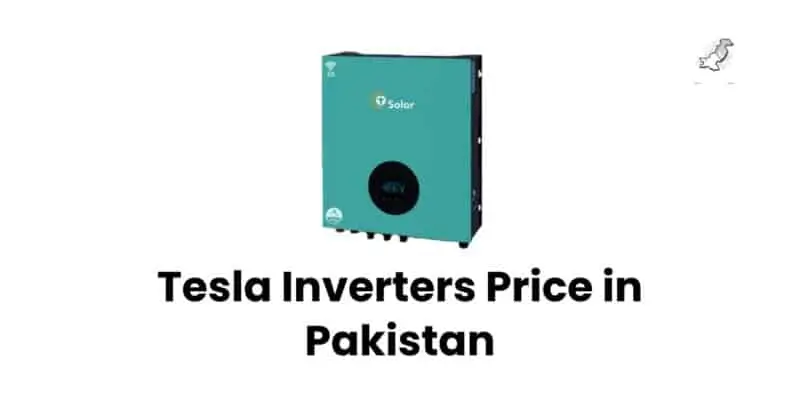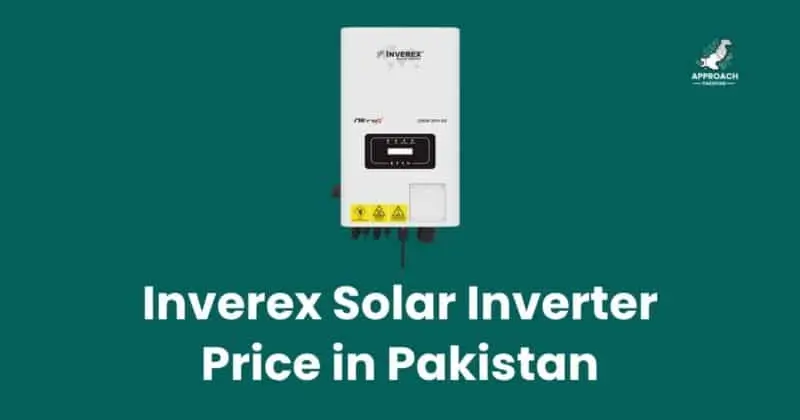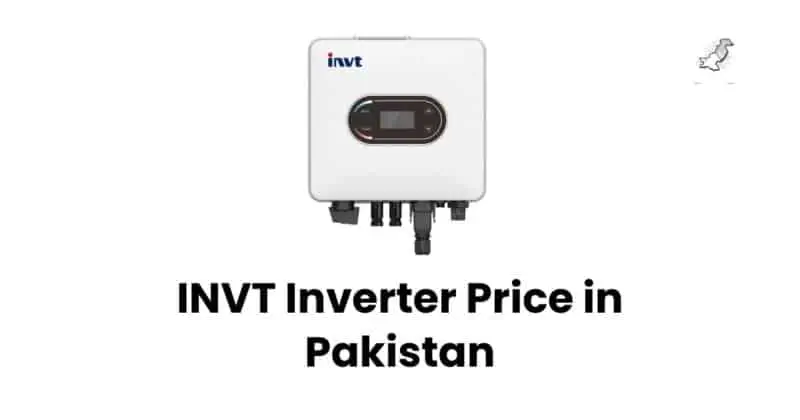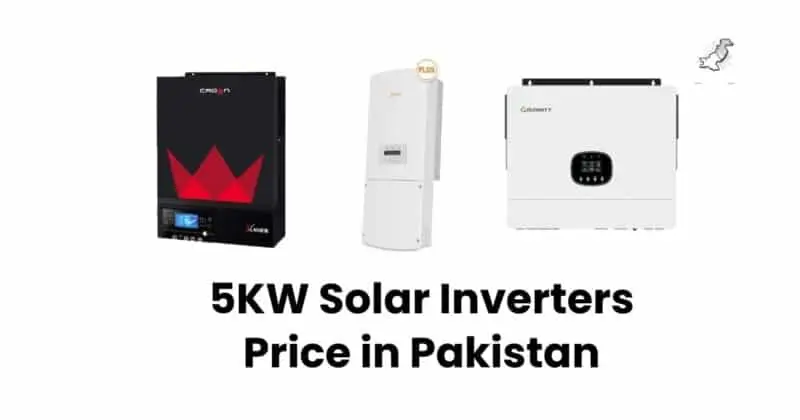Off-Grid Solar Inverter Price in Pakistan: Complete 2025 Guide
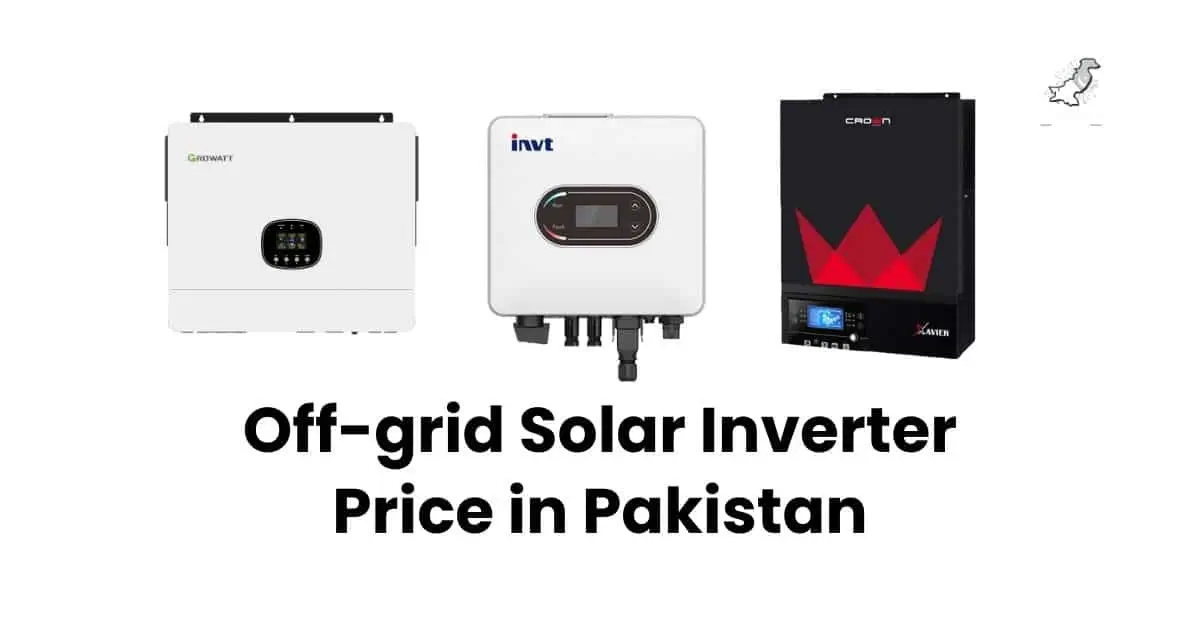
Off-grid solar inverter prices in Pakistan range from Rs. 30,000 for 1kW systems to Rs. 300,000 for 10kW systems. Popular brands include Inverex (Rs. 65,500 for 3.2kW), Knox (Rs. 105,000 for 3kW), and Tesla Axpert (Rs. 85,000 for 3kVA). Prices vary by capacity, brand, MPPT technology, and pure sine wave features.
Introduction
Your monthly electricity bill keeps climbing higher. Load shedding ruins your family time every evening. You’re tired of paying WAPDA’s outrageous rates.
Sound familiar? You’re not alone. Thousands of Pakistani families face the same energy crisis daily.
Off-grid solar inverters offer a permanent solution. They convert DC power from solar panels into AC electricity for your home. Unlike grid-tied systems, they work independently with battery backup.
Multimedia Suggestion: Add an infographic showing the difference between grid-tied and off-grid systems with simple visual icons representing homes, solar panels, batteries, and power flow.
This guide shows exact prices across all major brands. We’ll help you calculate the perfect system size. You’ll learn which brands offer the best value for money.
What is an Off-Grid Solar Inverter?
An off-grid solar inverter converts DC electricity from solar panels into AC power for household appliances while storing excess energy in batteries. It operates independently from the national grid, providing complete energy independence during power outages and eliminating monthly electricity bills.
Think of it as your home’s energy brain. Solar panels generate DC power like a car battery. Your appliances need AC power like wall outlets provide.
The inverter bridges this gap. It also manages battery charging during sunny hours. When night falls or clouds appear, batteries supply stored power.
Video Suggestion: Create a 2-minute animated video showing how DC converts to AC, with simple graphics of electrons flowing through the system.
Key components include:
- LCD display showing real-time system performance
- MPPT charge controller for maximum solar efficiency
- Pure sine wave output for sensitive electronics
- Battery management system preventing overcharge
Why Pakistan Needs Off-Grid Solar Solutions
Pakistan faces a severe energy crisis. Load shedding affects 80% of the population daily. Electricity tariffs have increased 300% in five years.
Rural areas suffer most. Many villages get only 8-12 hours of electricity daily. Grid infrastructure reaches just 65% of rural households.
Off-grid systems solve these problems permanently. They provide 24/7 power regardless of grid status. Initial investment pays back within 3-4 years through bill savings..
Off-Grid Solar Inverter Prices in Pakistan 2025
Current Market Price Overview
Market prices have stabilized after 2023’s volatility. Chinese manufacturing improvements reduced costs by 15%. Local assembly in Pakistan further cuts import duties.
Price factors affecting costs:
- Inverter capacity (1kW to 10kW+)
- Brand reputation and warranty terms
- MPPT vs PWM technology
- Pure vs modified sine wave output
- Local vs imported components
Price by Capacity Analysis
| Capacity Range | Price Range (PKR) | Best For | Popular Brands |
| 1-2kW | 30,000 – 65,000 | Small homes, cabins | Inverex Aerox, MaxPower Sunbridge |
| 3-5kW | 65,000 – 150,000 | Medium homes | Knox Argon, Tesla Axpert |
| 6-8kW | 150,000 – 230,000 | Large homes | Ziewnic Marvel, Power Square |
| 10kW+ | 230,000 – 300,000 | Commercial use | SAKO SUNON, Homage UPS |
Small Capacity (1-2kW) Systems
Perfect for basic needs like lights and fans. These systems power essential appliances during outages. Rural cabins and small apartments benefit most.
Top picks in this range:
- Inverex Aerox 2.2kW: Rs. 30,000
- MaxPower Sunbridge 1000: Rs. 48,000
- Cherry OPAL 1.4kW: Rs. 32,000
Limited surge capacity restricts heavy appliance use. Air conditioners won’t run on these systems. Consider your actual power needs carefully.
Medium Capacity (3-5kW) Systems
The sweet spot for most Pakistani homes. They power all basic appliances plus one AC unit. Installation complexity remains manageable for most technicians.
Market leaders include:
- Inverex Aerox 3.2kW: Rs. 65,500
- Tesla Axpert 3kVA: Rs. 85,000
- Knox Argon 3kW: Rs. 105,000
- Tesla Axpert 5kVA: Rs. 145,000
These systems offer excellent value for money. Payback periods average 3.5 years in most regions. Battery requirements stay reasonable at 4-8 units.
Large Capacity (6-10kW) Systems
Built for luxury homes with multiple ACs. Commercial applications also use these systems. Higher installation costs require professional expertise.
Premium options available:
- Power Square 6kW: Rs. 163,500
- Ziewnic 6.0kW PV7000: Rs. 171,400
- Knox Argon 5kW PV6000: Rs. 135,000
- SAKO SUNON 4.2kW: Rs. 155,250
Brand-wise Price Comparison
Inverex Inverters Price List
Inverex dominates Pakistan’s solar market with 35% share. Local assembly keeps prices competitive. Strong after-sales network covers all major cities.
| Model | Capacity | Price (PKR) | Key Features |
| Aerox 2.2kW | 2.2kW | 30,000 | Budget-friendly, basic MPPT |
| Aerox 3.2kW | 3.2kW | 65,500 | Most popular model |
| Veyron II 2500W | 2.5kW | 45,000 | Pure sine wave |
| Veyron II 6000W | 6kW | 85,000 | High-end features |
Why choose Inverex?
- Widest service network in Pakistan
- Competitive pricing due to local assembly
- 2-year warranty on most models
- Easy spare parts availability
Quality control improved significantly since 2022. Customer complaints dropped 40% according to industry reports.
Knox Inverters Price List
Knox targets premium customers seeking reliability. German engineering meets Pakistani affordability. Higher upfront costs offset by longer lifespan.
| Model | Capacity | Price (PKR) | Efficiency Rating |
| Argon VM II 3000 | 3kW | 105,000 | 93% |
| Argon VM II 4500 | 4.5kW | 130,000 | 93% |
| Argon VM II 6000 | 5kW | 164,000 | 93% |
| Krypton 5kW | 5kW | 205,000 | 95% |
Knox advantages:
- Superior build quality and components
- 5-year warranty vs industry standard 2 years
- Advanced MPPT tracking technology
- Excellent voltage regulation (±5%)
Professional installers prefer Knox for commercial projects. Residential customers appreciate long-term reliability despite higher prices.
Tesla Axpert Performance Analysis
Tesla Axpert offers Chinese quality at competitive prices. Voltronic Power manufacturing ensures consistent performance. Popular among price-conscious buyers.
| Model | Capacity | Price (PKR) | Special Features |
| Axpert 3kVA | 3kW | 85,000 | Compact design |
| Axpert 5kVA | 5kW | 145,000 | High surge capacity |
| Axpert VM III | 3kW | 125,000 | Twin output design |
| MVS Series | Various | 60,000+ | PWM technology |
Tesla Axpert benefits:
- Proven track record in Pakistani market
- Good price-to-performance ratio
- Wide availability through dealers
- Compatible with most battery types
Some models lack advanced features found in premium brands. Basic LCD displays provide limited system information compared to competitors.
Ziewnic Marvel Series Features
Ziewnic targets the premium segment with Taiwanese engineering. Advanced features justify higher pricing. Commercial installations often specify Ziewnic.
Premium features include:
- Conformal coating for harsh weather
- Wi-Fi monitoring capabilities
- Battery equalization technology
- SNMP integration for commercial use
| Model | Capacity | Price (PKR) | Unique Features |
| Marvel 4kW | 4kW | 152,000 | Wi-Fi monitoring |
| Marvel 6kW | 6kW | 171,400 | Commercial grade |
| PV5000 | 4.5kW | 152,000 | Hybrid capability |
| PV7000 | 6kW | 171,400 | Maximum efficiency |
Technical Specifications Comparison
MPPT vs PWM Technology
MPPT (Maximum Power Point Tracking) extracts 20-30% more power from solar panels compared to PWM technology. It adjusts voltage and current automatically to find optimal power points. All modern off-grid systems should use MPPT for maximum efficiency.
PWM works like a simple switch. It’s cheaper but wastes significant solar energy. MPPT acts like an intelligent transformer, optimizing power extraction continuously.
Real-world example: A 3kW solar array with PWM might generate 2.1kW on average. The same array with MPPT produces 2.7kW under identical conditions.
Cost difference: MPPT adds Rs. 15,000-25,000 to system cost. Annual energy gains justify this premium within 18 months through increased generation.
Pure Sine Wave vs Modified Sine Wave
Pure sine wave inverters produce clean electricity identical to grid power. They protect sensitive electronics and run all appliances efficiently. Modified sine wave creates stepped approximations that damage some devices and reduce motor efficiency.
Think of electricity like music. Pure sine wave produces smooth symphony notes. Modified sine wave creates choppy, distorted sounds.
Appliances requiring pure sine wave:
- LED TVs and computers
- Variable speed fans
- Microwave ovens
- Medical equipment
- Laser printers
Modified sine wave costs Rs. 10,000-15,000 less. However, appliance damage and reduced efficiency eliminate savings quickly.
Battery Compatibility Guide
Different inverters support various battery types. Lead-acid remains most common due to lower costs. Lithium options gain popularity despite higher prices.
Battery type compatibility:
| Battery Type | Voltage Options | Inverter Compatibility | Lifespan |
| Lead-Acid Tubular | 12V, 24V, 48V | Universal | 4-6 years |
| AGM Sealed | 12V, 24V | Most models | 3-5 years |
| Gel Batteries | 12V, 24V | Premium models | 5-7 years |
| Lithium LiFePO4 | 24V, 48V | Latest models | 10-15 years |
Voltage configuration matters: 24V systems suit smaller homes (1-3kW). 48V works better for larger systems (5kW+). Higher voltages reduce current and cable costs.
Battery bank sizing depends on backup requirements. Calculate daily consumption and desired backup hours. Add 20% safety margin for system efficiency losses.
Buying Guide: Choosing the Right Inverter
Load Calculation Method
Calculate your home’s power needs before buying any inverter. List all appliances with their wattage ratings. Add 20% safety margin for starting surges. This determines minimum inverter capacity required for comfortable operation.
Step-by-step calculation:
- List all appliances you’ll run simultaneously
- Note each appliance’s wattage (check labels)
- Add all wattages together
- Multiply by 1.2 for safety margin
- Round up to next available inverter size
Example calculation for typical Pakistani home:
- LED lights (10 × 12W): 120W
- Ceiling fans (4 × 75W): 300W
- LED TV (1 × 65W): 65W
- Refrigerator (1 × 150W): 150W
- Water pump (1 × 750W): 750W
- Total: 1,385W
- With safety margin: 1,662W
- Recommended: 2kW inverter minimum
Interactive Tool Suggestion: Create an online calculator where users input their appliances and get automatic inverter size recommendations.
Battery System Requirements
Battery capacity determines backup duration during cloudy days. Calculate daily energy consumption in kWh. Multiply by desired backup days.
Battery sizing formula: Daily consumption (kWh) × Backup days × 1.3 (efficiency factor) ÷ Battery voltage = Required Ah capacity
Example for 3kW daily consumption:
- 3kWh × 2 days × 1.3 ÷ 24V = 325Ah
- Need: 4 × 100Ah batteries in series-parallel configuration
Battery configuration options:
| System Voltage | Battery Arrangement | Total Capacity | Typical Use |
| 12V | 2 × 100Ah parallel | 200Ah | Small cabins |
| 24V | 4 × 100Ah series-parallel | 400Ah | Medium homes |
| 48V | 8 × 100Ah series-parallel | 800Ah | Large homes |
Installation Considerations
Professional installation ensures safety and optimal performance. DIY attempts often result in poor connections and safety hazards.
Critical installation factors:
- Proper grounding and earthing
- Adequate ventilation for batteries
- Correct cable sizing for current loads
- Protection devices (fuses, breakers)
- Compliance with local electrical codes
Location requirements:
- Dry, well-ventilated area
- Temperature-controlled environment
- Easy access for maintenance
- Away from living areas (battery gases)
- Secure mounting for inverter
Installation costs range from Rs. 15,000-30,000 depending on system complexity. Complex installations requiring electrical upgrades cost more.
Video Suggestion: Create a time-lapse installation video showing professional setup from start to finish, highlighting critical safety steps.
Warranty and After-Sales Service
Standard inverter warranties range from 1-5 years depending on brand and model. Premium brands offer longer warranties but may have limited service centers. Local brands provide better service coverage but shorter warranty periods.
Warranty comparison by brand:
| Brand | Standard Warranty | Extended Options | Service Centers |
| Inverex | 2 years | 3-5 years available | 50+ nationwide |
| Knox | 5 years | None needed | 20+ major cities |
| Tesla Axpert | 2 years | Limited availability | 30+ locations |
| Ziewnic | 3 years | Commercial packages | 15+ cities |
What warranties cover:
- Manufacturing defects and component failures
- Performance degradation below specified levels
- Free repairs or replacements during period
- Labor costs (varies by brand)
What warranties exclude:
- Physical damage from misuse
- Lightning or power surge damage
- Normal wear and tear
- Unauthorized modifications
Service response times matter during emergencies. Local brands typically respond within 24-48 hours. Imported brands may take 5-7 days for parts availability.
Installation and Setup Guide
Pre-Installation Requirements
Complete a site survey before installation begins. Check electrical panel capacity, roof structure for solar mounting, and battery storage location. Obtain necessary permits from local authorities and ensure compliance with building codes.
Essential preparations:
- Electrical panel upgrade if needed
- Dedicated earthing pit installation
- Battery storage area preparation
- Solar panel mounting structure
- Protection device upgrades
Tools and materials needed:
- Multimeter for electrical testing
- Torque wrench for proper connections
- Insulation materials and protective gear
- Appropriate gauge wiring and connectors
- Grounding rods and earthing materials
Permits and approvals:
- Building department electrical permit
- Utility company notification (if applicable)
- Fire department clearance for battery storage
- Insurance company notification
Safety Precautions
Electrical work involves serious safety risks. Only qualified electricians should perform installations. DIY attempts risk electrocution, fire, and system damage.
Critical safety measures:
- Turn off main electrical breaker
- Test all circuits with multimeter
- Use proper personal protective equipment
- Follow electrical code requirements
- Install appropriate protection devices
Battery safety considerations:
- Adequate ventilation prevents gas buildup
- Spill containment for acid batteries
- Emergency eyewash station nearby
- Fire extinguisher suitable for electrical fires
- Regular maintenance schedules
Step-by-Step Installation Process
Professional installation follows specific sequences to ensure safety and performance. Each step builds on previous work and requires verification before proceeding.
Installation sequence:
- Site preparation and safety setup
- Inverter mounting and positioning
- Battery installation and connection
- DC wiring from solar panels
- AC wiring to electrical panel
- Grounding and earthing connections
- Protection device installation
- System testing and commissioning
Each step requires specific tools and expertise. Improper installation voids warranties and creates safety hazards.
Regional Price Variations
Karachi Market Prices
Karachi offers the most competitive inverter prices in Pakistan due to port proximity and dealer competition. Prices average 5-10% lower than other major cities. Largest selection of brands and models available.
Karachi price advantages:
- Direct importers reduce distributor margins
- High competition keeps prices competitive
- Better availability of spare parts
- More service centers and technicians
Popular Karachi dealers:
- Multiple showrooms in Saddar electronics market
- Warehouse pricing available for bulk purchases
- Installation teams with experience in high-rise buildings
- Same-day delivery in most areas
Lahore Solar Market
Lahore represents the second-largest solar market with stable pricing. Strong dealer networks provide good after-sales support. Prices typically match Karachi levels with occasional promotions.
Lahore market characteristics:
- Established dealer relationships
- Good technical support availability
- Competitive financing options
- Regional distribution hub for Punjab
Islamabad Pricing Trends
Islamabad shows slightly higher prices due to premium market positioning. Government employees and expatriates drive demand for quality systems. Service standards typically exceed other cities.
Islamabad market features:
- Premium brand focus
- Professional installation standards
- Government sector experience
- Higher-capacity system demand
Rural Area Considerations
Rural installations face 10-15% price premiums due to transportation and limited service coverage. However, greater need for backup power and higher electricity rates improve ROI significantly.
Rural challenges:
- Limited dealer networks
- Transportation costs for equipment
- Fewer qualified installers
- Parts availability delays
Rural advantages:
- Higher electricity tariffs improve savings
- More space for larger systems
- Less grid reliability increases value
- Agricultural applications possible

